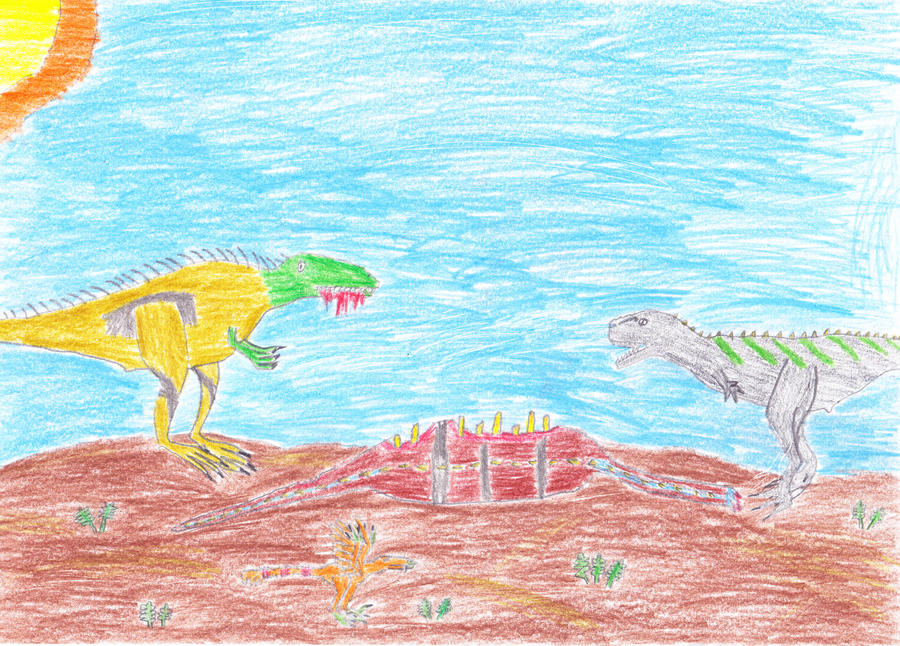Candeleros-Formation
The Candeleros Formation is a sequence of continental sedimentary rocks of the Upper Cretaceous of Argentina, which is known for its very diverse fossil fauna. These rocks were deposited in the early Cenomanian in front of about 100 to 97 million years. Outcrops of this geological formation can be found in the provinces of Río Negro, Neuquén and Mendoza. Names obtainable information and type locality of the formation is the Candeleros Hill in Neuquén.
The Candeleros formation achieved in some areas, a thickness of nearly 300 meters. It was mostly deposited in a fluvial branched flow system and consists mainly of sandstone and conglomerate. Some isolated areas have, however, also deposited aeolian ( wind) or as siltstone under swampy conditions. Paleosols are also common in some areas.
This formation is the oldest layer member of the Neuquén Group and belongs to the Rio Limay subgroup. Earlier this subgroup was even considered as formation, the Candeleros lineup was designated as Candeleros members. Today, the Rio Limay Subgroup is divided into three formations: About Candeleros lineup, the oldest layer member, are the Huincul lineup as well as the Cerro Lisandro Formation. The sediments of the Huincul lineup show lighter, greenish and yellowish colors, the border between the Huincul and Candeleros lineup is easily recognizable. The Candeleros formation is unconformably on the older Lohan Cura Formation.
Fossil Fauna
The formation is known for its rich vertebrate fauna. This makes fish, frogs, Sphenodontidae, primitive, legged snakes (including Najash ), various turtles find (including two species of the genus Prochelidella ), crocodiles (including Araripesuchus ), and mammals from the group Cladotheria. Dinosaurs of the formation close Titanosaurier as Andesaurus and Rebbachisauriden Limaysaurus and Nopcsaspondylus and theropods like the Dromaeosauriden Buitreraptor and Carcharodontosauriden Giganotosaurus with a.
In addition to body fossils and trace fossils such as fossil footprints and eggshells of theropods, sauropods and ornithopods have been found. Traces of pterosaurs ( Pterosauria ) of Ichnogattung Pteroichnus were attributed.
One of the most prolific discovery sites is La Buitrera ( "place of the Vulture ", from Spanish el buitre - " vulture " ), which is well-preserved three-dimensional skeletons of small terrestrial vertebrates shows. Skeletons of larger animals such as dinosaurs are rare in La Buitrera, although it has been at other nearby localities of Candeleros lineup among other things, Giganotosaurus, one of the largest terrestrial carnivore ever discovered.










